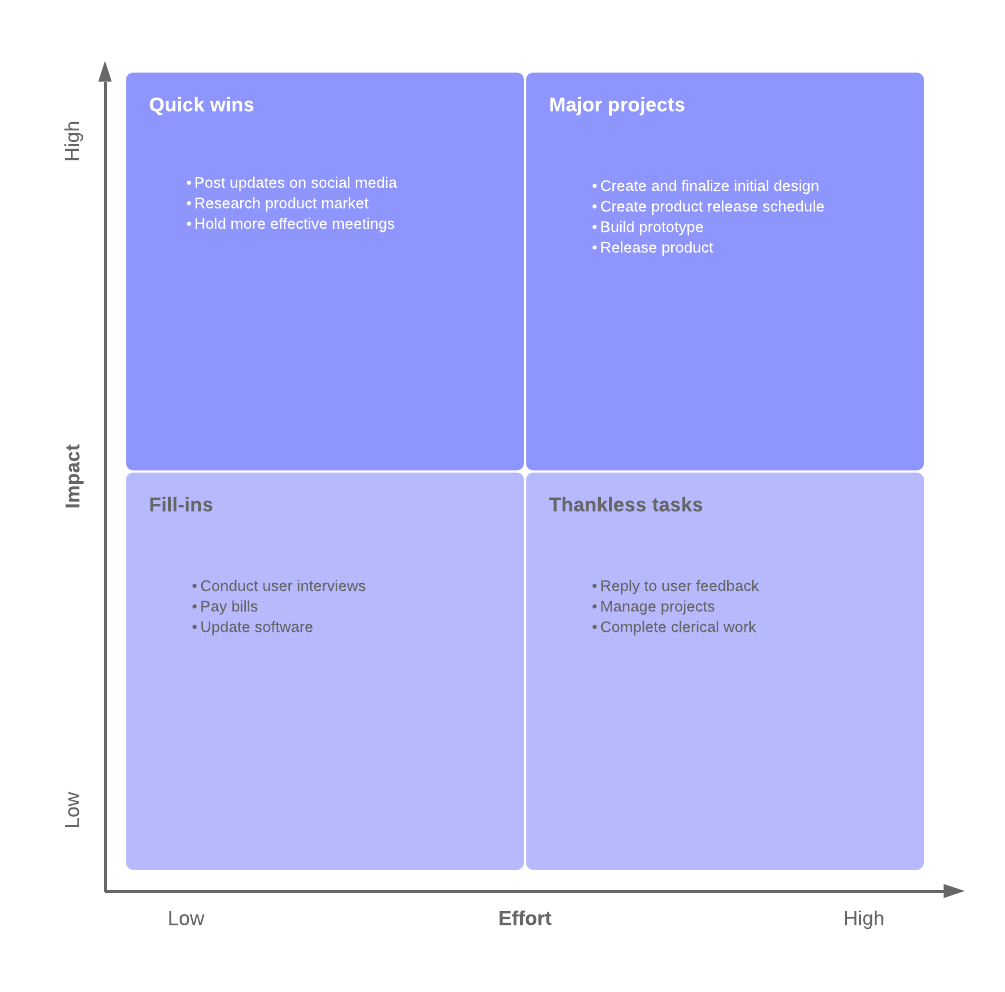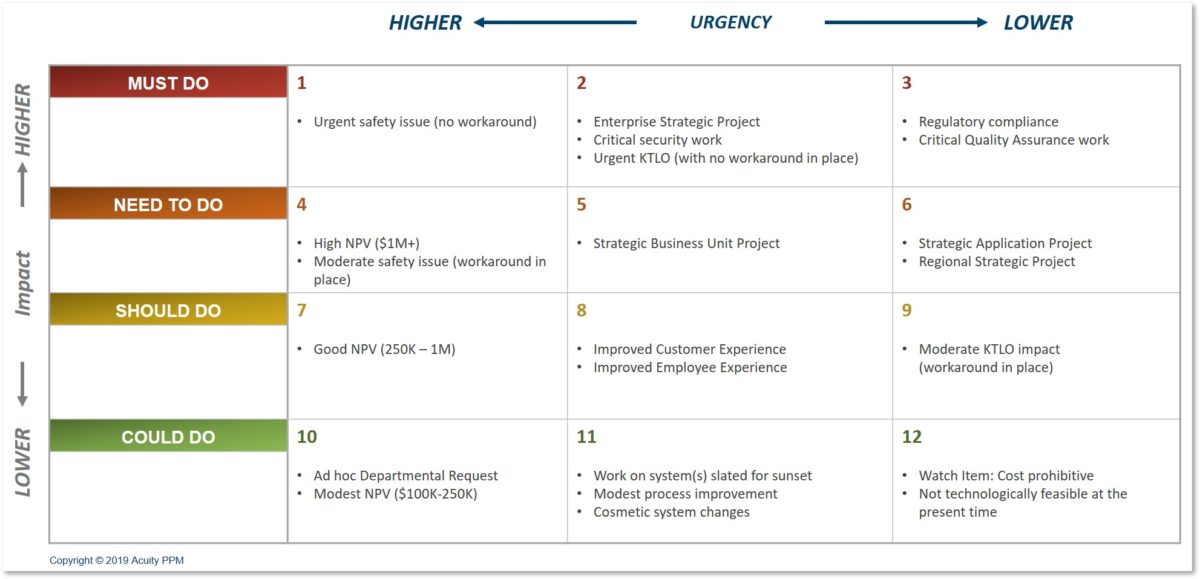

The Priority Values table holds records for all the possible priority values used in the priority matrix, making it faster to set up new priority matrices. Urgencies only appear in requests if the value in the request's Service Priority Group field overlaps with the Available for Priority Group field in the Urgency record. The Urgencies table contains a record for each possible urgency value that can be selected within a request record. The Order field defines the order in which the impact is listed in the drop-down list. Within a request, the available impacts are filtered based on the priority group of the Service for the request being contained in the Impact record's Available for Priority Groups field. Each impact can be made available for one or more priority groups. The Impacts table contains all possible Impact values that can be selected in the request tables. That will make those values available to create the priority matrix. Then, either the existing impact and urgency records can be updated to add that priority group to the available groups, or new impact and urgency records can be created and linked to the new group. In order to set up a new priority group, the priority group must first just be created, named, and saved. Anything that has both high impact and high urgency gets the highest priority, while low impact and low urgency results in the lowest priority. For example, the priority matrix for standard service requests has six levels of priority.Īll of the wording in the priority matrix fields is defined for the specific priority group, so it is possible to have completely different priority lists for different services, as needed. Priority scales are usually defined as: Critical/severe Major/high Medium Minor/low Here’s an example of an impact, urgency, and priority matrix. They are applied based on the request type and each priority group can have its own set of urgencies, impacts, and priority matrix of values that result from all combinations of urgency and impact within a record. Priority Groups TableĮach service in the Service Portfolio table is linked to a Priority Group.īy default there are six priority groups, but you can create additional ones as needed. This section describes how these tables work. As of 2014, this version had an average rating of 3.9, with 1,000-5,000 installs.There are five tables that manage the urgency, impact and priority values that are shown within a Service Request, Incident, Change Request, Problem or Release record.
IMPACT URGENCY PRIORITY MATRIX ANDROID
An Android version was added to the Play Store September 2013. In addition, the product has garnered a 4 out of 5-star rating or better on the Apple App Store on both the iPhone and iPad platforms, with over 1,300 reviews.
IMPACT URGENCY PRIORITY MATRIX PC
PC Magazine has ranked the iPad version of Priority Matrix among its 100 Best iPad Apps in 2011, 2012, and 2013. Various templates are available for different thought processes.Īcross the various platforms, Priority Matrix has over 90,000 paid customers, and has been ranked among the 10 highest downloaded productivity apps in the Apple App Store.

For further customization, every task has icons that can be selected to represent a specific task.

Cloud-based synchronization across platforms- Despite running on several different platforms, Priority Matrix is able to sync project and task data over the cloud, with data being stored on Priority Matrix's servers.pmatrix, for transferring a workspace quickly.



 0 kommentar(er)
0 kommentar(er)
